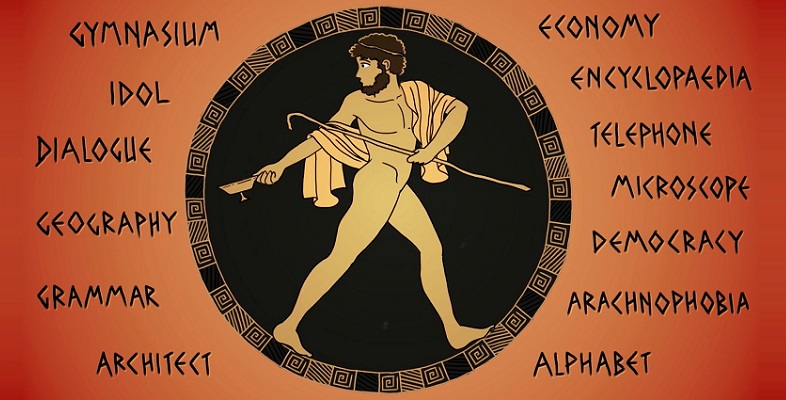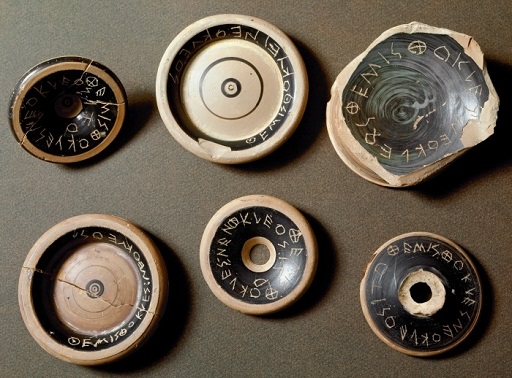9.1 Athens
Some minor variations of letter forms can be observed on the Themistocles ostraka, seen earlier in the course. Themistocles was ostracised from Athens at the end of the 470s. Over 2,000 ostraka with his name have been found, including a group of 190 discovered in a well on the north slope of the Acropolis. This group appears to have been written by a small number of individual hands, which suggests that the ostraka were prepared in advance for distribution to voters who were unable to write.
ΘΕΜΙΣΘΟΚΛΕΣ ΝΕΟΚΛΕΟΣ
Activity 14 Different letter forms
Do you detect any differences between these letter forms and the capitals you have learned? Look especially at theta, lambda and sigma.
Discussion
Theta is written in two forms. Two ostraka (the ones at the top centre and bottom left) place a dot inside the circle. The rest are written with a cross, a form sometimes referred to as a ‘hot cross bun’! The ‘bun’ gave way to the dotted form in Athens during the course of the fifth century.
Lambda, which consists of two strokes of unequal length, looks less like the standard Λ and more like English L. The ‘François Vase’ (seen earlier in Session 5, Section 7.1) contains an example in the name of Achilles. There were many Greek settlements in Italy and it was this L-shaped lambda that influenced the Roman alphabet, which is why it looks familiar.
Sigma consists of three lines rather than the four which became standard later (Σ).
You have observed the use of a second theta instead of a tau in Themistocles’ name. There is one other difference between Themistocles’ name on the ostrakon and the standard, dictionary form Θεμιστοκλῆς. Can you find it? (Hint: it relates to one of the vowels.)
Discussion
The ostrakon uses Ε (epsilon) as the penultimate letter instead of Η (eta). At this time, the Athenian alphabet did not contain either eta or omega, using epsilon and omicron instead for both the short and long forms of ‘e’ and ‘o’ throughout much of the fifth century BCE.

